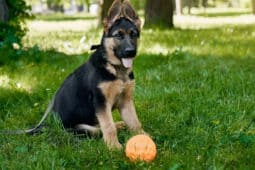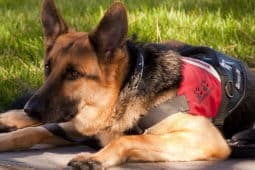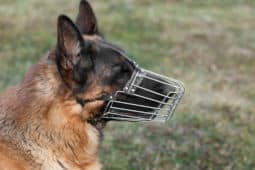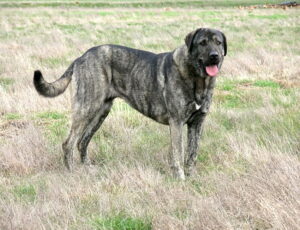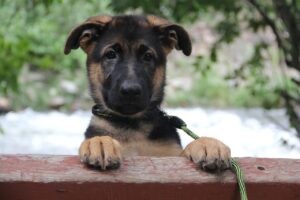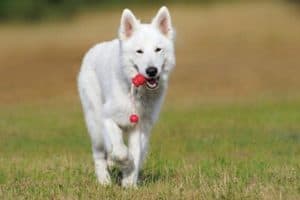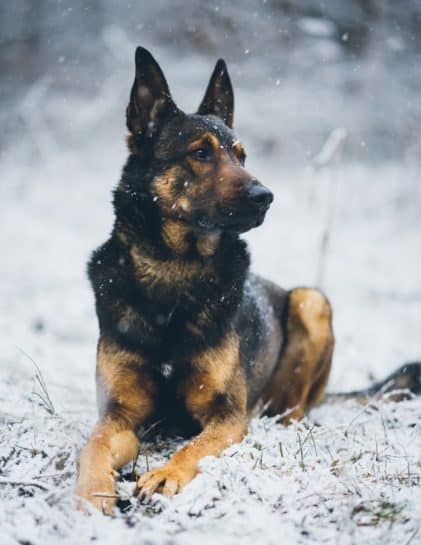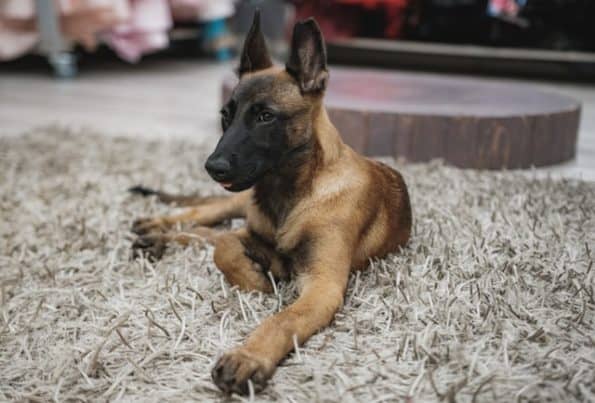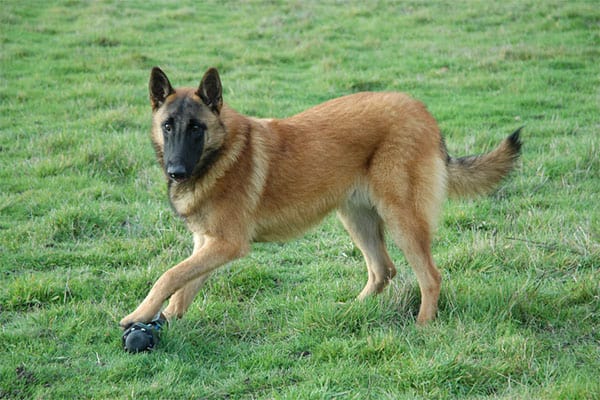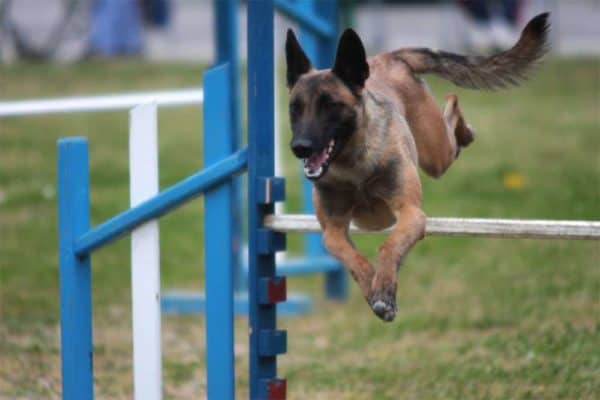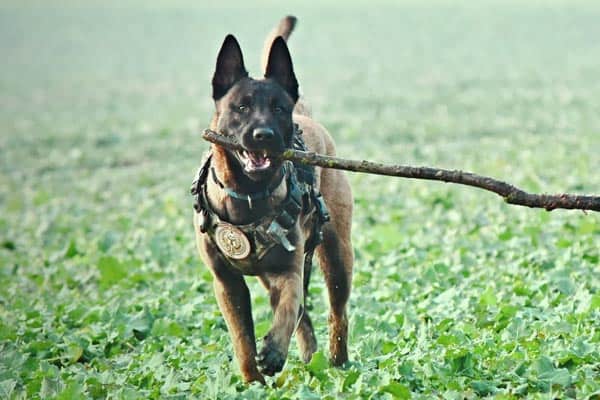How to Calm Down a Belgian Malinois: Tips and Tricks Malinois Owners Need
The Belgian Malinois dog breed is still not that well known outside of working dog circles.
Professional dog trainers who work with the police force, military, and private protection and security industries know the Malinois very well, however. They know how to train, work with, and calm this active, intelligent K-9.
In this article, we will talk about the main reasons that can cause your Belgian Malinois to get anxious or over-excited. We will then discuss positive training tips and tricks to help you get your dog to calm down.
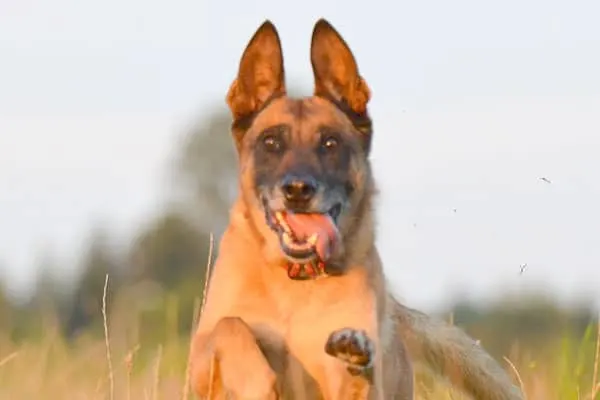
How to Calm Down a Belgian Malinois
Learning how to calm down a high-energy dog breed like the Belgian Malinois starts with understanding the natural daily needs of this breed. They need a lot of exercise – and not just for their bodies. They need mental enrichment as well, especially in puppyhood.
So you always want to start by giving your Malinois appropriate exercise for their age and life stage. Then you can work on calming your dog down using the positive reinforcement tools we will talk about here.
Learn Calming Techniques from a Malinois Trainer
In this helpful short YouTube video from a professional dog trainer, you will learn a simple, short technique to calm your Malinois down.
The trainer points out at the beginning of the video that it is helpful to make sure your dog has had some exercise and socializing time before you start trying to calm them down.
This is a good way to make sure that your dog’s excitability isn’t just coming from boredom, loneliness, or a lack of the type of intense exercise this dog breed needs.
Understand the Belgian Malinois Dog Breed’s History and Need
As the American Belgian Malinois Club explains, the Belgian Malinois is bred with a high energy level and a natural intolerance of being left alone.
These dogs were originally herding dogs. They were responsible for herding and guarding livestock, a job that was literally never over.
So your Malinois comes equipped with extra-keen senses that are always scanning the horizon for new possible threats. These are very strong, athletic dogs with the courage to tackle predators who may come in groups or be twice their size.
Malinois also has a very strong prey drive and a drive to chase and herd. In lieu of livestock, your Malinois will be keen to herd you and your family and anyone else they regard as “their herd.”
Put in context with the type of work the Malinois was developed and bred to do, it may be easier to tell whether the problem behavior you are noticing is true anxiety or may just be part of that dog’s breed personality and temperament.

Why Do Belgian Malinois Dogs Get Anxious or Over-Excited?
As Intelligent K-9 Training points out, a Belgian Malinois dog without a job to do is likely to become anxious, nervous, or overly excited.
These dogs just don’t understand the typical day of a companion canine. They don’t want to lie on the couch or even at your feet for hours. They are not content with a morning and evening walk and throwing the frisbee for a few minutes.
Of course, if you are living with a Malinois, you likely already know this.
So let’s take a look at the top reasons why the Malinois dog breed may become anxious.
Past trauma
As the Malinois Rescue Ranch explains, the Malinois is an “intense” dog breed.
This natural intensity can morph into anxiety when the dog is not provided with the level of physical, mental, and emotional interaction they really need. This, in turn, can lead to re-homing.
And re-homing can lead to trauma. These dogs are extremely intelligent and sensitive and highly attuned to their handlers. So a dog that gets re-homed and then placed with a new family might easily display anxious behaviors right from day one.
Boredom (physical or mental)
We have already touched on how the Malinois was bred to work at a 24/7 job herding and guarding and protecting livestock. They can work very long hours in very difficult conditions without tiring.
Now imagine this same dog in a home where all they get is a few hours of time with their family in the morning and at night.
Boredom is a big problem for any companion animal but it is a potentially huge problem for a working dog like the Malinois, who will find their own “work” to do remodeling your furnishings or finding creative ways to escape the backyard.
There is a reason the Malinois (along with the German Shepherd) is the top breed choice for military, police, and private sector protection and security K-9 jobs. They are adept at identifying threats and taking action.
But in a domestic setting when there are visitors to the home, friends coming and going, constant deliveries, and other animals, a Malinois needs to be taught who is a friend and who is a threat.
Without this training, called “socialization,” your Malinois will always be on guard and likely a highly anxious dog.
No structure
Malinois is an incredibly brave, disciplined, and devoted dog when properly trained and socialized. They have a work ethic and loyalty that makes them the dog of choice for military operations like the Navy SEAL mission that brought down Osama Bin Laden.
When a Malinois doesn’t have a structure in their day with a clear outline of their role and purpose, anxiety is a natural outcome.
Illness or injury
An often-overlooked reason for anxiety in canines is illness or injury. Dogs, like other animals, are prone to try to hide their weakness. But when a dog really doesn’t feel good or is in pain, you may see behavioral changes, including anxiety.
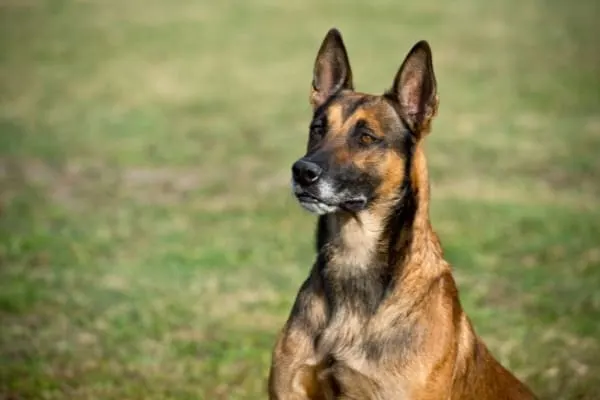
How to Help Your Malinois Calm Down
Here are some tips and tricks to help your Malinois calm down.
Take your dog for a health check-up
The first step to helping your Malinois calm down is always going to be a health check-up. You just want to be sure there is no underlying health issue – an illness, allergy, or injury – that may be causing the restless behavior.
Also, when a Malinois puppy becomes sexually mature, there can be a period of unusually intense activity.
You can talk with your dog’s veterinarian about the best time to do a neuter or spay procedure. If you plan to leave your dog intact, you may have to “weather the storm,” so to speak, until your dog grows up.
Enroll your dog in canine athletics
Schutzhund training is a particularly great training method for a high-intensity dog like the Malinois.
But there are plenty of other athletics like agility, rally, lure coursing, and nose work that could give your dog the mental and physical enrichment required to tire them out.
Teach your dog to activate their “off switch”
As this Malinois owner thread on Working Dog Forum points out, the Malinois dog doesn’t naturally come with an “off switch.”
These dogs are basically always “on.” They are true guarding and protection dogs that have no natural sense of what it is like to be off duty.
But as Dantero Malinois breeder explains, this is what you are there for. You need to teach your dog to activate their “off switch.”
There are a number of techniques for this, including training your dog to sit or lay down quietly in a certain area called a “place board.”

Subtract anxiety-producing events from their environment
The more that is going on in your Malinois’s environment, the more stimulated and excited these dogs are likely to become.
After all, the Malinois is a breed that is a top pick to do some of the most dangerous K-9 jobs on the planet. They can handle a very high level of activity and stimulation.
But this is also likely to leave a pet Malinois over-stimulated, unlike for a working Malinois who is used to this in their everyday life.
So you want to do everything you do with your dog in the calmest, quietest environment you can manage. Do what you can to mask surrounding ambient noise, including barking dogs. Train your dog to associate quiet and calm with good things.
These are not the easiest training goals to pull off.
If you find you are having a tough time dealing with your anxious Malinois, or if you suspect your dog has developed full-blown separation anxiety (which Malinois is prone to), the best approach is often to hire a professional K-9 trainer to help you.
As a side benefit, you will get to learn from a pro. But the real benefit will be that your Belgian Malinois will finally learn how to be calm and relax as a part of your family.















